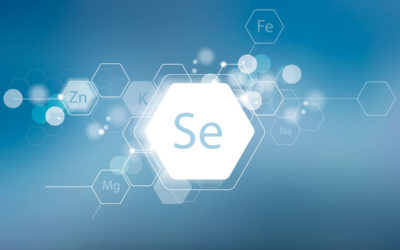To improve the AD process, we need to understand it more thoroughly.
Do we already know enough?
I don’t think so, at least where I am concerned …
That’s why I dug into the paper “Application of Bioelectrochemical Systems and Anaerobic Additives in Wastewater Treatment: A Conceptual Review” written by Nhlanganiso Ivan Madondo, Sudesh Rathilal, Babatunde Femi Bakare and Emmanuel Kweinor Tetteh.
Not for the first time my take-away was how little is known in terms the bioelectrical details in the anaerobic digestion process and as a corollary, implemented in the biogas industry.
I spend a considerable amount of effort to keep up with new articles and especially with “digesting” interesting scientific papers (they are not even easy to find) to regurgitate, condense and share their insights with my contacts among AD community.
Let’s speak this time about the importance of additives to promote syntrophic microbial communities.
The review demonstrates again that conductive materials like Iron Oxide can improve substantially the process efficiency of AD.
Why?
Not that easy to explain – but I summarize how we can produce more and quicker methane and even with less energy dispersion.
We know that the business microorganisms are in is how to share “energy”. Several different possibilities exist:
- IHT = Interspecies hydrogen transfer.
- IFT = interspecies formate transfer.
Both can coexist and form a part of MIET = indirect or mediated interspecies electron transfer.
On the other side we have DIET, DIRECT INTERSPECIES ELECTRON TRANSFER. This needs physical contact between bacteria with pili, cytochromes and nanowires.
In the syntrophic microbial community H2 or electron exchange is needed to degrade organic materials, these different exchanges are a function of the H2 concentration. Hydrogen is a small molecule and can diffuse easily, but has low solubility.Moreover, the physical distance between different microorganism is influencing if IHT or IFT will predominate. Under 10 micrometres IHT is happening, over 10 micrometres IFT.
The authors underline that the supplementation of conductive substrates (magnetite nanoparticles) is promoting DIET. DIET is much more efficient to transfer energy as IIET (Indirect Interspecies Electron transfer). The higher the DIET the lower the risk of VFA- (Volatile Fatty Acids – like propionic acid) accumulation in the digester, the lower the risk of harmful inhibition from these components.
Improving DIET with specific Iron Oxides can be boosted in combination with adding of bioavailable trace elements. EDTA based products can achieve excellent results.
Most enzymes need trace elements (metals etc.) as co- factors. The most plentiful metal present in AD is Iron!
“Because nearly all metalloenzymes found in the route of the generation of biogas have several clusters of Fe4S4, Fe2S4 or Fe2S2. Iron is vital for cytochromes and the generation of methane. Moreover, Iron is an economical trace metal for enhancing methane production and the stability of the process”.
Iron can is also increase the activities of cellulase, essential enzymes to digest fibrous input material, which are available for free or small cost like corn stover, straw or deep litter. COD removal is heavily increased.
This underlines the importance of Iron for the AD process – not only for the methane production but also to increase hydrolysis of cellulose.
Nanoparticles of Iron have enormous energy storing capacity, a high surface area (big surface/volume ratio) and a specific surface able to give space to grow different bacteria and Archea in close contact. Iron nanoparticles help the cell to adsorb trace elements, these cell carriers are essential for the vital and efficient work of the microorganisms.
Zeolite, a surface-active substance similar to Iron Oxide, can help the immobilization of organic matter. The huge Cation Exchange Activity CEA is important for reducing inhibition from ammonia. This improves the AD performance and widens the range of use of Nitrogen rich input materials like poultry waste or slaughterhouse waste.
Proper additives can improve process efficiency in AD!



